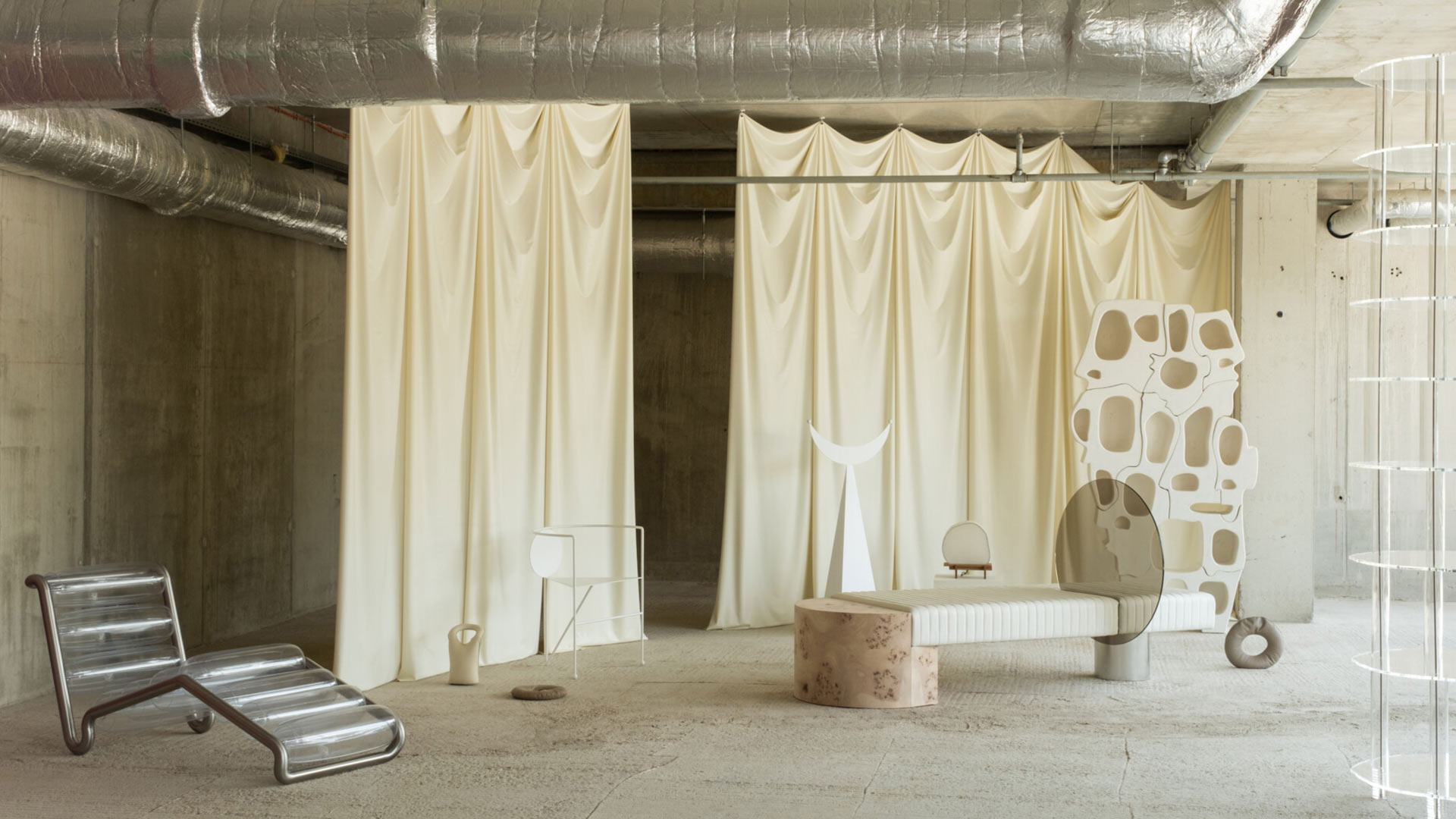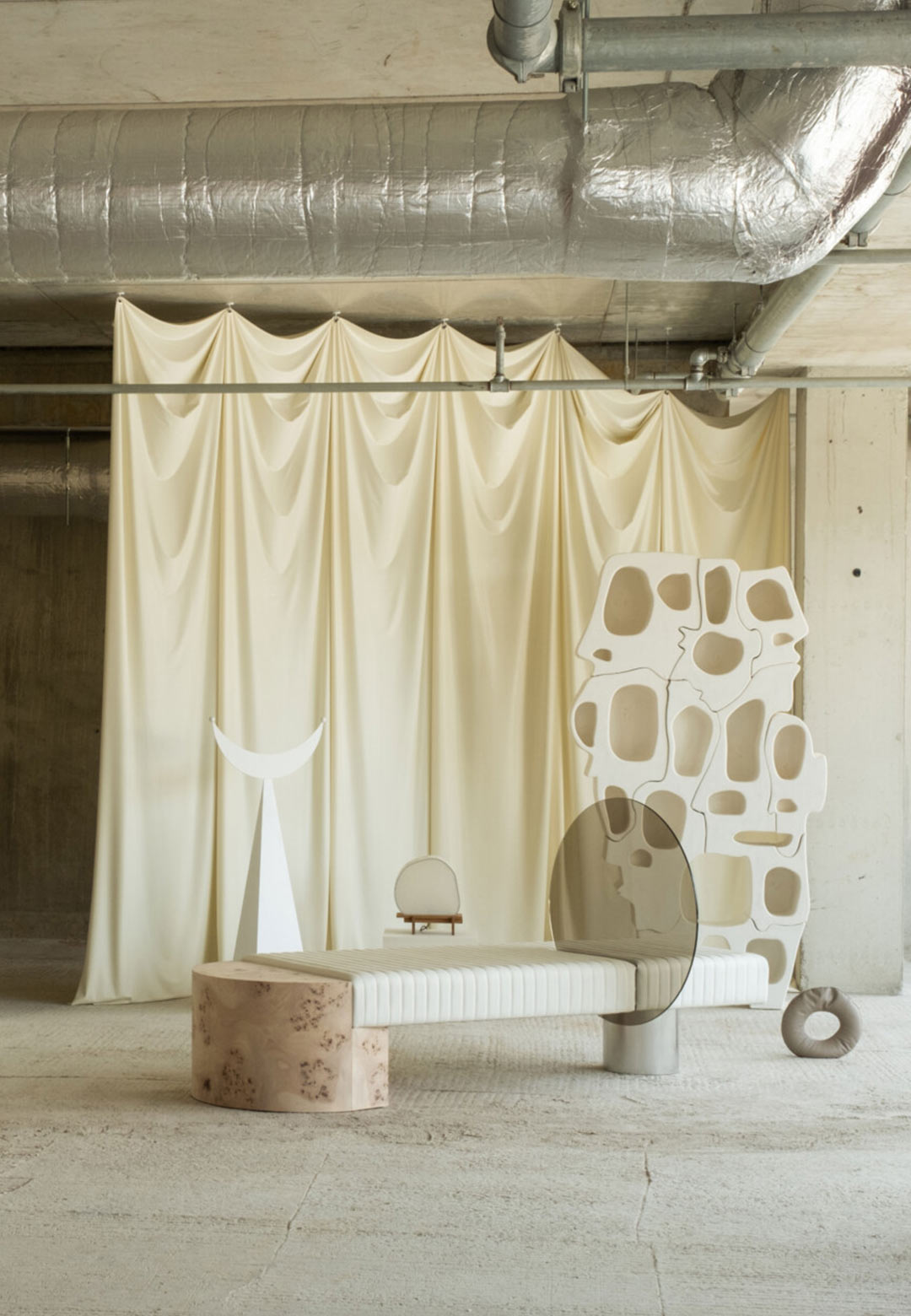Vanessa Heepen is a spatial designer based in Berlin, a city that despite becoming a hub for artists and creatives in recent years has a significant shortage of spaces to showcase design creation. While the city is booming with art, there is not much to shout about regarding design. Heepen noticed it too however it was when she encounters a wonderful location that gave her the push to take initiative. Heepen’s versatile body of work includes high-end clients such as Mercedes Benz, Nike and KaDeWe for which she designed remarkable sets, stores, and environments. She also has a knack for interior settings. Her work sits at the intersection of all this combining architecture, interior design, and communication design through which she was able to create remarkable and innovative design solutions.
Being a long-time resident of Berlin, Vanessa happened to be in the position to temporarily occupy an amazing space overlooking the river near Ostbahnhof in a building still under construction. Inspired by the practice of nomadic galleries she took the initiative, leveraging her background and creating Forma, a place dedicated to showcasing design creations. “This is my first work as a curator. It’s given me great pleasure and I think it won’t be the last time,” she says about the gallery. Forma is a nomadic project that strives to exhibit unique objects that stand between art and design. With the selected objects Forma plans to fill different spaces in the future and become a moving centre for design. For this first edition, Heepen curated a selection of unconventional and remarkable contemporary and 20th-century pieces and set a space where everyday gestures transform into a “playful and poetic choreography” in a way that entering the room is like setting foot in a dream or a wonderland. In this dreamlike space “functionality and wonder merge.” With this creative and contemporary approach, Forma expects and encourages visitors to look at these painstakingly selected design products with sharp interest and acquire them through deep understanding.
This exhibition is titled The Room I Walk the Line and showcases mostly Germany-based designers and artists. Works from Anima Ona, atelier axo, ´Moho, Cainelliklaska & Mark Bohle, Carsten in der Elst, Claire Wildenhues, cure.tain, Florida Petal, Freia Achenbach, Haus Otto, Gerlach Heilig, June Fàbregas, LOTTO Studio, Maija Fox, Natalia Ramos, Nazara Lazaro, Pinasaan, Pegasus Product, Reidar Mester, Sia Hurtigkarl, Studio Kuhlmann, Vanessa Heepen, Veronika Janovec and Wiener Times have been showcased in the exhibition from which we have taken a look at three. Freia Achenbach and June Fàbregas work together under the name Anima Ona and have a product in the exhibition made using broken float glass. Float glass is a sheet of glass made by floating molten glass on a bed of molten metal. In the process of its making, breaking due to pressure is a normal occurrence and the artists have tried to control and direct the pressure to make an object using the same occurrence. The duo investigated how this energy input can be used directly to further process the broken pieces into a new object. Science and art contribute equally to their vision, practice, and research projects.
Reidar Mester was inspired by historical craftsmanship techniques and traditional design and combines the principles of architecture, design, and traditional artisanal methods to create unique and meticulously crafted work. His detailed-oriented practice focuses on experimentation with the properties of the material he is working with, to reach a harmonious composition that highlights the qualities of each material.
The practice of Studio Kuhlmann sits between furniture design, sculpture and lighting design and is concerned with the mundane objects of our domestic space. Fascinated by metal and its craft potential, all objects they produce are manufactured within the studio’s own facilities as a limited-run series. Through this process, they strive to as the studio puts it, “heighten awareness of our present”.
Overall, it seems that Forma Gallery’s first exhibition has achieved what Heepen intended. As a curator, she has made a diverse selection of studios, designers, and objects to curate a versatile but uniform exhibition that is a strong first step for a promising future. One should wait and see if this nomadic space for design and art would survive the never-ending accommodation battle in Berlin. We sure hope it does.






 Sign in with email
Sign in with email










What do you think?